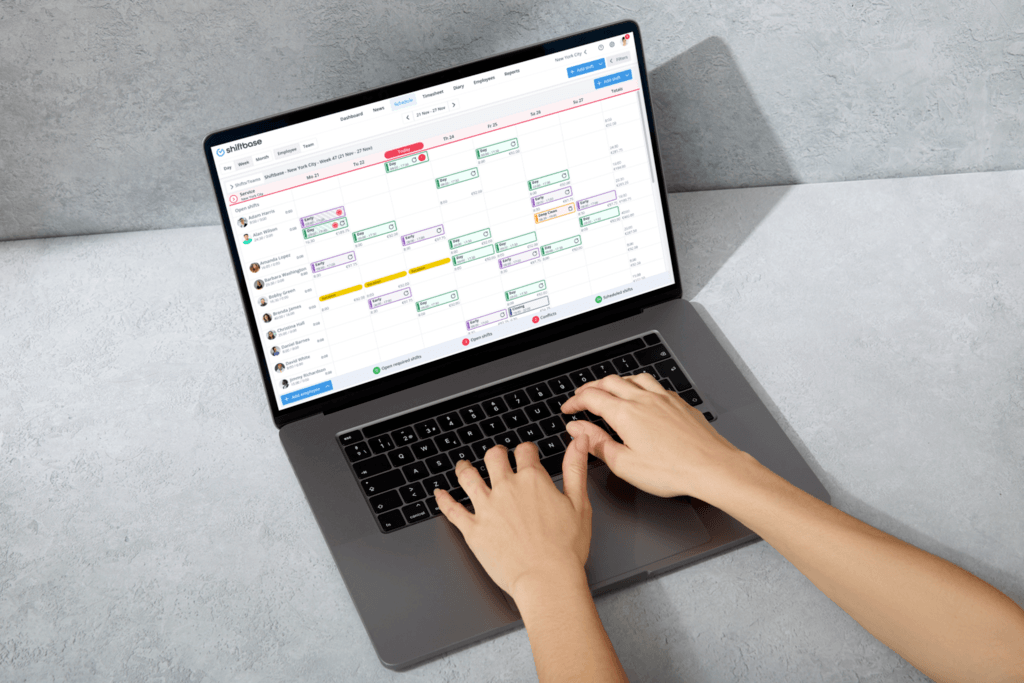Who is a shift leader?
A shift leader is an integral member of the management team entrusted with overseeing the day-to-day operations during a designated work shift. They are tasked with guiding and supporting staff members to ensure the shift runs smoothly and efficiently.
Shift leader responsibilities
- Managing shift schedules to ensure adequate coverage.
- Providing appropriate training and support to employees.
- Addressing customer issues and ensuring customer satisfaction.
- Upholding safety standards and adhering to company policies.
- Supervising and directing kitchen staff and other team members.
Why do you need a shift leader?
The presence of a shift leader is paramount for several reasons. Firstly, they act as a liaison between management and staff, ensuring that responsibilities are carried out correctly and efficiently. Moreover, they provide essential guidance and support to employees, fostering a positive work environment.
By overseeing shift operations and addressing customer issues, shift leaders uphold quality standards and enhance customer satisfaction, thereby contributing to the overall success of the business.
What is the difference between a manager and a shift leader?
Understanding the distinction between managers and shift leaders is essential for grasping organizational leadership dynamics. Despite both roles being pivotal, they vary in responsibility, decision-making authority, and team interaction.
1. Scope of responsibility
Managers have a broad responsibility, focusing on long-term goals, strategies, and organizational decisions. They oversee multiple teams, including shift leaders, to ensure business objectives are met.
Shift leaders manage day-to-day operations of their specific shift, focusing on immediate tasks and direct supervision of staff. Their role is more operational than strategic.
2. Decision-making
Engaged in high-level decision-making, managers develop strategies and make significant changes affecting the company's direction.
Makes operational decisions within established guidelines, focusing on short-term objectives and immediate issues.
3. Leadership role
Responsible for mentoring, performance evaluation, and development of shift leaders and employees, aiming for long-term growth.
Provides direct supervision, on-the-job training, and motivation to achieve daily goals, acting as a role model for the team.
4. Team interaction
Has a strategic relationship with the team, communicating through shift leaders or department heads.
Works closely with team members, directly involved in daily activities and accessible for immediate support.
Useful Read: Enhancing Communication with Employee Scheduling: The Key to Retention
Daily duties and responsibilities of a shift leader
As a shift leader, you are entrusted with a myriad of responsibilities to ensure the seamless functioning of the shift. Let's explore the key duties that should always be included in a shift leader job description:
-
Opening and closing procedures: From unlocking the doors in the morning to securing the premises at night, shift leaders oversee the smooth transition between shifts, ensuring that all necessary tasks are completed efficiently.
-
Staff management: Scheduling employees, providing training, and offering ongoing support are vital aspects of a shift leader's role. By effectively managing team members, shift leaders facilitate a cohesive and productive work environment.
-
Customer service: Handling customer issues with professionalism and care is paramount for maintaining customer satisfaction. Shift leaders are often the first point of contact for customer complaints and play a crucial role in resolving issues promptly and effectively.
-
Inventory and resource management: From monitoring stock levels to ensuring the proper utilization of equipment, shift leaders are responsible for managing inventory and resources to support shift operations.
-
Ensuring compliance: Upholding safety standards and adhering to company policies and industry regulations are non-negotiable aspects of a shift leader's role. By ensuring compliance, shift leaders mitigate risks and contribute to a safe and secure work environment.
Essential skills for a successful shift leader
Here are some essential skills that every shift leader should master:
1. Communication
As outlined in the job description, effective communication stands as the cornerstone of successful leadership. Shift leaders must be adept at conveying information clearly and concisely, fostering open dialogue among teams and ensuring everyone is on the same page.
2. Decision-making
In shift operations, the ability to make quick and informed decisions is crucial. Shift leaders, as appointed by hiring managers, must exhibit confidence in handling on-the-spot decisions, prioritizing tasks, and adapting to changing circumstances.
3. Team management
Central to the job of a shift leader is the responsibility of managing teams to achieve common goals. This requires strong interpersonal skills, the ability to delegate tasks effectively, and the aptitude for creating a collaborative and productive work environment.
4. Problem-solving
As articulated in the job description, shift leaders are tasked with addressing and resolving workplace challenges efficiently. This necessitates the ability to identify issues, analyze root causes, and implement effective solutions to keep operations running smoothly.
Ultimately, the success of a shift leader hinges on their skills in communication, decision-making, team management, and problem-solving. By honing these essential skills, shift leaders can fulfill their responsibility of guiding teams towards achieving organizational objectives.
Tools that make a shift leaders’ job easier

In the dynamic and often fast-paced environment that shift leaders navigate, having access to the right tools can significantly streamline their responsibilities and enhance team efficiency. Here's how specific tools play a pivotal role in simplifying the job of a shift leader:
Managing shift schedules is one of the most time-consuming tasks for shift leaders. Employee scheduling software automates this process, enabling shift leaders to create, distribute, and modify schedules easily.
These tools often come with features that allow employees to submit their availability and request time off, which the software can automatically account for when generating schedules. This not only saves time but also reduces scheduling conflicts and ensures adequate coverage for each shift.
Time tracking systems are essential for monitoring the hours employees work, ensuring compliance with labor laws, and managing payroll accurately. These systems can automate the clocking in and out process, reducing manual errors and simplifying the management of overtime.
Useful read: What to Look For in a Clock In Clock Out System
By providing real-time visibility into staff attendance, time tracking tools help shift leaders make informed decisions about staffing needs and productivity levels.
Managing absences effectively is crucial to maintaining smooth operations. Absence management platforms streamline the process of handling leave requests, sick days, and other types of absences.
These tools enable shift leaders to quickly see who is unavailable, adjust staffing levels accordingly, and ensure that there are no gaps in shift coverage. By automating the absence management process, these platforms also help in reducing the administrative burden on shift leaders and improving overall workforce management.
Together, these tools not only make the job of a shift leader more manageable but also contribute to a more organized, efficient, and productive work environment.
Useful Read: Employee Management Software for small business - A Guide

Employee scheduling and Time-tracking software!
Conclusion
As a hiring manager its important to understand the crucial role shift leaders play in ensuring business operations run smoothly, bridging the gap between staff and management while fostering a productive work environment.
By leveraging tools like employee scheduling software, time tracking systems, and absence management platforms, shift leaders can enhance efficiency and tackle their responsibilities with greater ease.
Ultimately, the effectiveness of shift leaders is vital to the operational success and overall health of any organization.
Enhancing Shift Leadership with Shiftbase
Shift leaders play a pivotal role in organizational success, and Shiftbase is designed to support and amplify their impact. Utilizing Shiftbase's employee scheduling feature, shift leaders can efficiently organize staff and manage various shifts, ensuring operational excellence.
The time tracking tool within Shiftbase aids in monitoring work hours accurately, a critical aspect of shift management.
Additionally, the platform’s absence management system allows for effective handling of leave requests, ensuring the right staff levels are maintained for seamless operations.
Empower your shift leaders with the right tools by trying Shiftbase free for 14 days. Sign up here and transform your workforce management with effective leadership.



